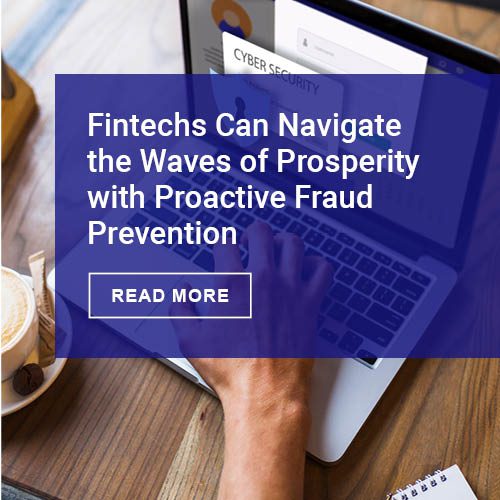It’sbeen almost a few weeks since Appleannounced its long-awaited entry into payments with Apple Pay. For paymentsgeeks, which includes everyone at Mercator Advisory Group, this was ourComic-Con. We’ve been busy these past couple of weeks putting out numerous think pieces on what this development means for variousstakeholders within the payments ecosystem. We have also had a number of callswith clients and other industry stakeholders, all keen to understand where theystand if Apple succeeds in driving a once in a generation change in the waypeople pay for things. One of the questions I have been wrestling with sincethe Apple’s September 9 keynote is what Apple Pay means for retailers who areinvesting in their own wallet apps that combine loyalty and payments. This wasthe subject of my most recent report, where I used theexample of the immensely successful Starbucks app to ask some pretty basicquestions: Why invest in a loyalty program? Can loyalty membership activity andmobile payments adoption be mutually reinforcing? What does an “omnichannel”experience really mean, and what mobile technologies can help retailers buildit?
Rather fortuitously, I, along with my colleagues Tim Sloane and Ken Patersonwas recently invited to the offices of Paydiant, a company whose fortunes areclosely tied to the way the mobile payments sweepstakes play out. Last week,Chris Gardner, co-founder of Paydiant, showed us around his company’s sleek newoffices in Newton, Massachusetts. Paydiant builds white-label mobile wallets.Two of its most prominent customers are Subway and the soon-to-be-launched MCXwallet, which is a joint effort by a national coalition of retailers. What isunique about Paydiant is that it is truly agnostic when it comes to technologyand platform. Whether a merchant wants to build a pure Android wallet thatleverages Near Field Communication (NFC) or a QR Code-based solution that workson iOS, Paydiant will deliver. Ditto for Bluetooth Low Energy (BLE) andintegration with existing loyalty program and point-of-sale architecture.Paydiant’s business model is built on platform usage and revenue-sharingagreements. Paydiant gets paid only if consumers actually use the merchant’sapp to make purchases and redeem offers. By eschewing the requirement thatcustomers utilize a Paydiant-branded mobile wallet, the company has sidesteppedthe need to expend valuable marketing dollars to establish a consumer brandthat competes with the likes of, say, Venmo. Paydiant has clearly positioneditself better than many others in the market to weather the fast-changing windsof consumer preference in the tumultuous mobile payments journey. With close to$40 million in funding from investors over three rounds, it seems to be wellfunded enough, in addition to being nimble enough, to do so.
The coolest part of the visit was without a doubt seeing next-generationpayments technologies in action in Paydiant’s demo room, built to mimic arestaurant, charmingly named “Mom’s Deli.” There we saw how Paydiant’s mobilewallet app (which closely matched the Mom’s Deli colors and branding, showing agreat eye for detail) could complete transactions and redeem coupons via QRCode and BLE. Unfortunately, our host Chris Gardner’s phone was an iPhone 5, sowe couldn’t see NFC in action (though even the iPhone 6 will not allow athird-party app to access its NFC antenna). Chris made the entirely sensibleobservation here that Paydiant’s BLE implementation allowed for a greaterdegree of flexibility in loyalty and rewards integration. Unlike NFC payments,Paydiant’s implementation of BLE does not involve tokenized payment credentialsactually being communicated from the device to the POS over Bluetooth. Instead,the Bluetooth handshake only serves to authorize those credentials to beaccessed from the cloud in order to complete the payment. Chris maintained thatthis makes for a much faster and more seamless “last-inch” experience comparedto NFC. It also allows for better integration of loyalty rewards and coupons.The future of retail is “post-POS” argued Chris. In-store payments would becomeas easy and seamless as paying for an Uber ride, where the payment process islargely invisible once you receive the service you came for. Sales associates,who will know your name as soon as you walk in to the store and check in viaBLE, will be fully focused on giving you the assistance you need to obtain whatyou came for, rather than waste time counting change and swiping cards. It’s abeguiling vision, but perhaps some distance in the future as many consumersstill prefer the finality of the card swipe or the phone tap. Despite mysupposed millennial nonchalance about sharing personal data, I find myselfrefreshing my Uber app after every ride to make sure the driver in question“ended” the trip and I didn’t get overcharged (a completely irrational actgiven the fact that I know Uber will make whole if I were defrauded and thedriver’s all-important rating would suffer irreparable damage).
We later asked Chris what he thought Apple Pay meant for a merchant like Subway,for which Paydiant has developed a native mobile wallet app àla Starbucks.Would consumers really want to download a separate app just for Subway ratherthan expect to derive the same benefits through Apple’s Passbook? Chris wasfirmly of the opinion that Apple’s entry into the mobile payments space,however delayed, was a good thing. The more comfortable users become with theidea of paying for things with their phone, the greater the potential marketfor Paydiant’s services. Even if only 15 percent of Subway’s customers used itsnative app, and the rest divided themselves among Apple Pay and moretraditional payments methods, that would still be a considerable achievement.Those 15 percent would likely be among Subway’s most loyal and frequent customers.They would have downloaded the app for its mobile food ordering capability andthe loyalty benefits it provides, judging it to be a sufficient trade-off forthe investment in “attention” they would have to make.
As I argued in my last report, in an age of abundant information,attention is the scarcest resource. Merchants will need to find ever morecreative ways to retain and monetize consumer attention, and building astand-alone app can be an excellent tool to do so. Of course, what works forStarbucks and Subway may not work for K-mart. There are myriad differentreasons to pursue a loyalty program from increasing wallet share to learningmore about your consumer segments. Some of these objectives work very wellthrough an integrated mobile app; others don’t. Nevertheless, the dust is farfrom settled on how the mobile payments story plays out. Merchants will need toiterate and experiment with different approaches to see what works best forthem, whether that means building a native app, partnering with a largercoalition such as MCX, integrating with proximity marketing platforms like Shopkick,or doing some combination of everything until something clicks. Paydiant seemswell placed to offer something compelling for every flavor of mobile paymentsstrategy, making the company well worth watching. –
This submission comes from Mercator Advisory Group member and non-member blogs found here











